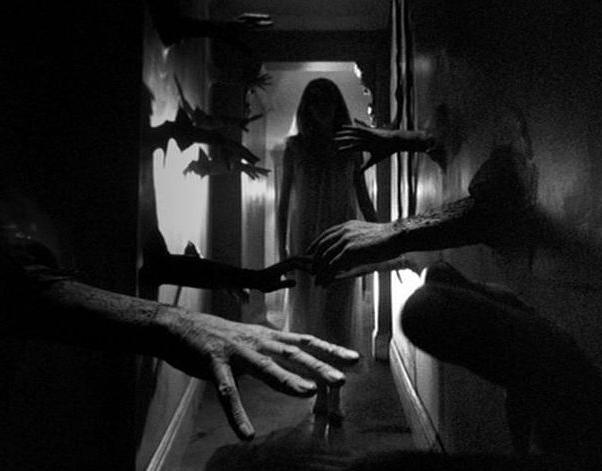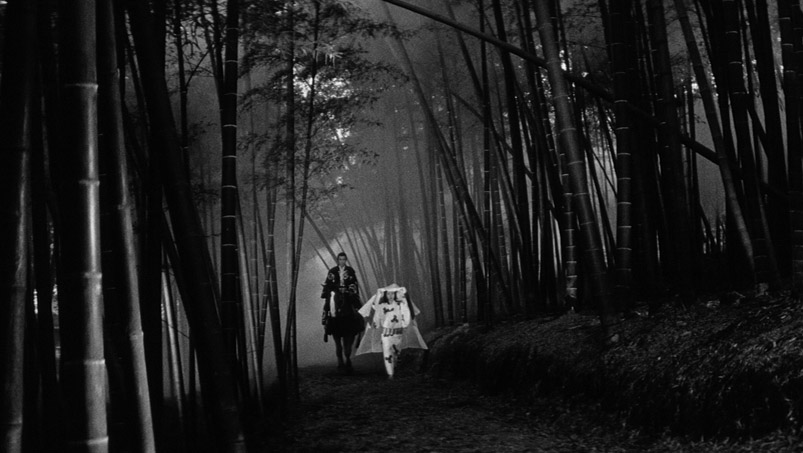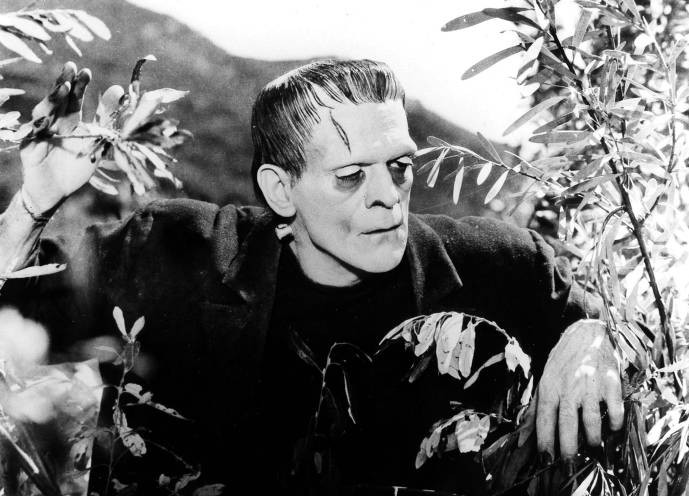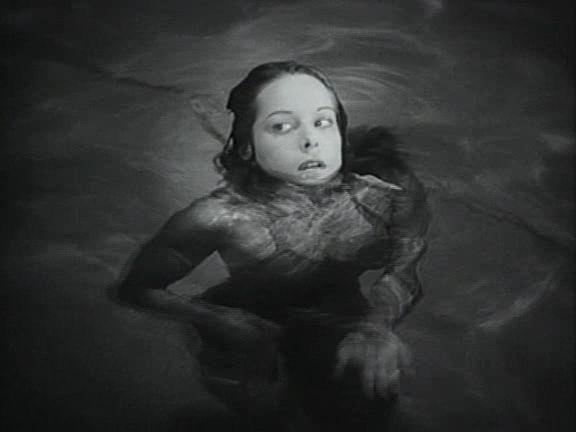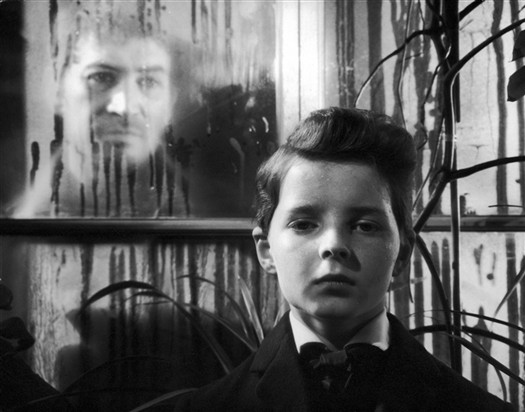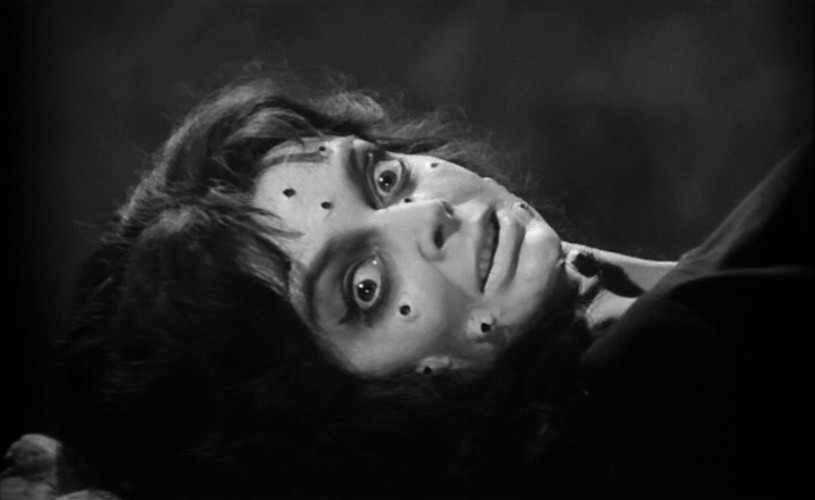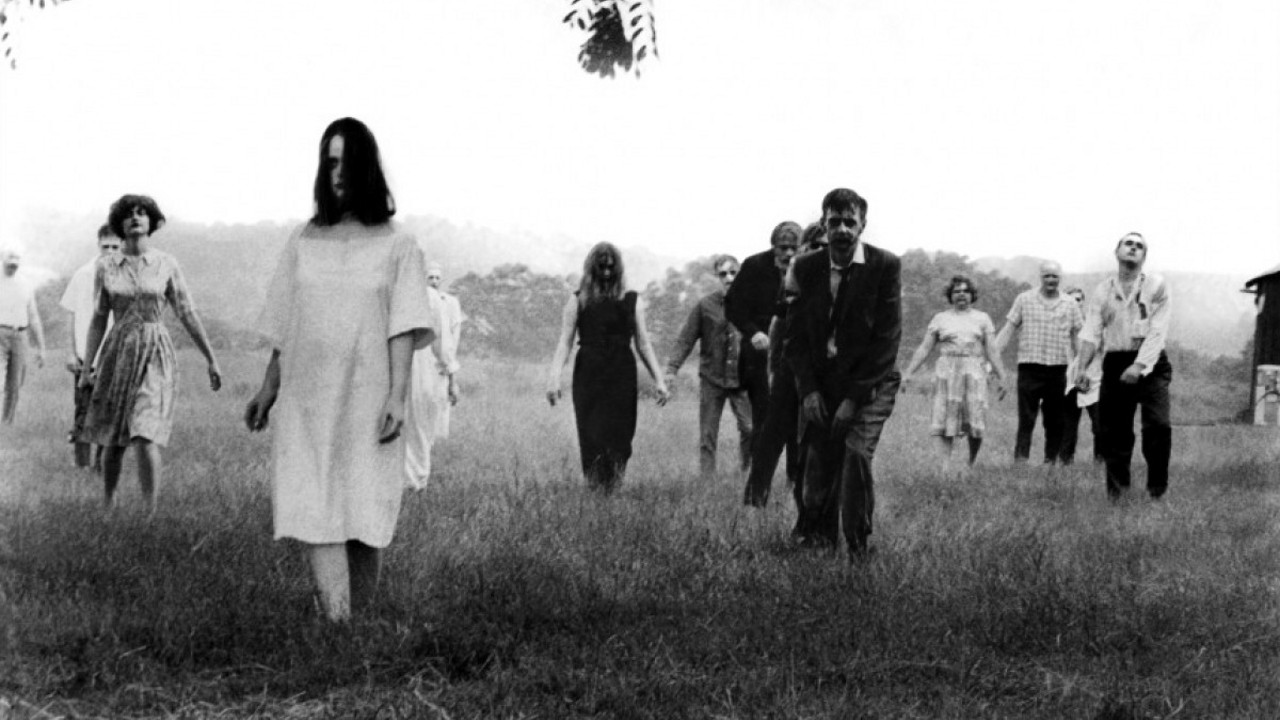14. Repulsion (1965)
In the early to mid 1960’s, perturbed Polish director Roman Polanski made several dark and cynical explorations of angular humanity at odds with itself – Knife in the Water, which plays like one, and the dreary, caustically humorous Cul-de-Sac, to name two. But his most famous efforts, and his most damaged, were outright horror while those other two films only skirt it. His most famous early film, Rosemary’s Baby, was yet to come, but 1965’s Repulsion is plenty estimable in its own right.
The story of a young woman who finds herself at the wrong end of sanity, Repulsion sees Polanski tying form and content together and flexing his filmic muscles more than in perhaps any other film of his – it is, if anything, Polanski unchained with a concept that allows him to be precisely that.
As the film progresses, he slowly moves from a clinically detached style to something more gleefully exotic and deranged, having a time chopping continuity editing to little bits and piercing the screen with all manner of visual chaos. He puts us in the mind of someone who can’t escape it, and the experience is cinema at its most unhinged.
13. Kuroneko (1968)
Kaneto Shindo’s abrasive, soul-sucking, sensuous, and borderline abusive critique of the Japanese jidaigeki (period drama) genre is at once shockingly radical for 1968 and entirely relevant today. Essentially an exploration of the male gaze and its abusive relationship to anything in its path, the film sees a group of samurai rape and kill two women, a mother (Yone, played by Nobuko Otowa) and daughter-in-law (Shige, played by Kiwako Taichi), only for a black cat to lick their bodies and beckon their ghosts forward to seek a melancholy, plaintive revenge.
The film doesn’t bask in its unholy despair, but it doesn’t shy away either; it has an eye for the grotesque and the destructive and isn’t afraid to speak its mind. It’s undoubtedly tragic, but it also has a certain verve and ruthless passion lacking in many classic films. Little of the self-consciously classy stuffness of classic-filmmaking remains – only that which allows the film to lull us into a sense of safety before coming unhinged and attacking our very senses.
If anything, its 1968 release sees its closest match in the revisionist Westerns coming out at the same time in the US. Those films turned their gaze angrily toward their country’s past, as does this one, but they did so with a sense of unbridled fury and excitement, a delight in challenging history’s lies.
Likewise, Shindo’s film has a certain liveliness to its revenge-tale, with elegiac and poetic imagery and abstract blacks off-set by pained, oppressive, cavernous sound-design, a camera that goes from worrying to angry in the span of seconds, and a complete lack of respect for anything resembling continuity editing.
This is not a quiet meditation, but a pinpoint scream that lashes out and demands to be heard. It’s a ghostly haunt, but this ghost has a bit more on its mind than simply sitting around and moving a candle or something. It’s going to wreck the place, and we can’t do nothing but watch.
12. Frankenstein (1931)
James Whale brought sound horror roaring into a new decade and kick-started a long-running near-monopoly over American horror in the process with his adaptation of Frankenstein in 1931, produced on the quick once Universal realized it had a huge hit in the form of another “respectable” (read: literature-based) horror source: 1931’s Dracula.
Few films, more than Dracula, better support the case that when mainstream film-goers say “great film” they mean “great performance” and little more (Browning’s direction in that film is hopelessly static and mundane). But the ship was righted within a year when Whale had his shot and gave us perhaps the second finest of all the Universal Horrors (kept from the top only by the fact that Whale would have to wait four years to finish prodding at the book’s psychoanalytic themes).
Everyone loves to write about Karloff here, and they are unquestionably right for doing so; his performance is mesmerizing, and completely at odds with Lugosi’s performance earlier that year. Lugosi gave us a delicious, oily, sinewy force so intricately, carefully, willfully contained yet so obviously in love with the ego, a character in complete command of everything he did.
Karloff, however, is the opposite: a child, confronted with the world, and trying with all his might to find his place in it. His facial expressions and jerked movements convey someone who desperately wants to belong but cannot possibly know where to look to understand what this might mean.
Yet there is much more to Frankenstein’s success than simply Karloff. Whale’s direction takes forefront – his understanding of German Expressionism and how to dilute it just right to amp up the more realist Shakespearean tragedy of his works helps the movie immensely, as does his clear grasp of the unchained camera and how to glide it over graveyards and laboratories so that we explore every nook and cranny, and so that they are ultimately far creepier than they would be presented to us statically.
Colin Clive, meanwhile, gives a far more expressive performance than Karloff (the role requires it) and captures all the mad scientist’s tortured humanism –not the caricature that has emerged for the type since the early 30’s, but an honest-to-good tragic human being. The film’s only flaw, its admittedly flimsy scene transitions brought on by the short running length, is not nearly enough to distract from one of the first sound masterpieces in any genre of film.
11. Cat People (1942)
Val Lewton’s name is seldom mentioned among non-cinephiles today, but in the 1940’s, his films defined American horror (his best, most soul-aching film, I Walked with a Zombie, doesn’t appear on this list only because it is horror-in-name-only).
His crowning “horror” achievement, however, was the first film he realized with RKO: the sinewy, steamy, shockingly radical Cat People. Curiously, the first half of the film is almost categorically a psychoanalytic relationship drama – if one knew nothing about the film going in, there would be no hint of horror.
Its strong material, subversively amped up by lead star Simone Simon’s stunningly left field performance as someone who is so confused with herself and her position in society she can’t make heads or tails of how to produce a basic sentence (her work comes to us like some drugged out alien attempting to do humankind at a comedy show).
Yet, the first half ultimately serves more to deepen the stakes of the film’s eventual caterwauling slide into horror. Simon’s character Irena believes she is cursed to turn into a large, vicious cat-like creature anytime she feels distaste or anger, which inevitably rears its ugly head when she ends up in a marriage she feels she cannot truly participate in. The second half of the film is a roller-coaster of stunning sequence after sequence, with the two best towering over just about anything else in the genre.
First: when Alice (Jane Randolph) is stalked by an unseen figure and director Jacques Tourneur stages one of the ultimate fake-out jump scares with his commanding understanding of the moving image and how it darts our eyes to specific places on the screen without us realizing (the borderline abstract color backgrounds help a mighty bit as well). And secondly, and perhaps even more effectively, a sequence in a pool where Alice is again being stalked boasts some absolutely dynamite editing and uses the reflecting images of the pool on the ceiling to create a queesy, ever-moving atmosphere.
Special mention should go to the absolutely stunning use of sound design in these sequences, spread out to capture a lack of pinpoint location and to instead fill the entire screen with nervy anxiety that comes from no one specific point. It makes it sound as if the numerous hisses and growls the film throws at us are coming from everywhere at once, including behind us.
Added to one of the greatest ever examinations of primal, existential dread and perhaps the finest film to capture the essence of “fear of the unknown”, the film also gives us a fairly radical critique of Western rationalism for its ineffectiveness at curbing psycho-sexual tension, and an even more radical critique of the denial of feminine sexuality in society – for, without Simon’s socially-constructed personal hatred for her own sexual passion, she would be free as a bird. Not bad for a 73 minute film.
10. The Innocents (1961)
Not to be outdone by an American, journeyman director Jack Clayton gave us this British haunt around the same time as Ray Wise nearly perfected the haunted house genre with The Haunting – together, the two are as mercilessly tightly-constructed and ruthlessly unsparing in their classical chills as any horror duo.
Both emphasize subjective film-making that owes a debt to a psychoanalysis of the distinctly pop variety, exploring minds torn apart by themselves and the soul-crushing weight of a society pressing itself right down upon those it calls victims. And theme aside, both are stylistic masterpieces of fraught tension and uneasy, queasy film-making.
Visually, The Innocents is more restrained than The Haunting, far more composed and less chaotic. Yet it’s not a sort of arch-British classicism or stuffiness – in fact, the film plays as much like a critique of this sort of prim and proper restraint by positing it always commits violence upon the angry, difficult emotions barbarically crammed down underneath the façade of high-class. If the film is restrained, it’s only because its acting the part to hide how it’s secretly subverting its very form, and sneaking up on us and having a time creeping us out while it’s at it.
Of course, when the visuals are let loose form their formal rigidity, the camera moves between deep-focus idyllic landscapes rendered cavernous wounds on the earth, and piercing, pervasive, painful close-ups. It’s always there exploiting a fundamental tension between what exists to us directly and what floats around peripherally. Meanwhile, the superimposition work, asking characters to cover up others until they swallow each other whole, works wonders.
But it’s the sound in particular that is unparalleled. Befitting its Gothic tones (over, under, and everything in between), the film is positively refute with theatrical, ominous gestures that most often play out in the audio. They, more than anything, peek out at us beneath the film’s formally restrained composition to let us know something naughty is hiding underneath.
9. Black Sunday (1960)
Black Sunday is known today primarily as one of the first feature films of Mario Bava, possibly the greatest horror film-maker ever to grace the screen, and the one perhaps most gloriously indebted to pushing the unholy limits of the genre. Yet, while this is itself a high honor, it can distract from just how effective this singular experience is, especially in light of how non-unison it is with many of Bava’s later films. Narratively, it’s far more grandiose and theatrical in its heaving, lurid classicism, playing more like Hammer Horror (then all the rage) than the less narrative focused, more improvisational, and above all grimier films that populate the director’s later work.
First of all, the most apparent fact of the film is that it is beautifully monochromatic, finding untold beauty in grotesque wonders and treating nerviness with a crystal-clear precision that threatens to penetrate the celluloid and lash out at us. Bava is mostly known (almost categorically so) for his work with bold, brash, lurid colors (primarily reds, reds, reds, and some darker maroon reds mixed in for flavor) – the man took blood in horror and made it chaotic, performative art-form. Thus, the pure beauty found in the total lack of color here is all the more notable.
The thought of him loosing his cherished technique is no small fright indeed, but he works wonders with the chiaroscuro grandiosity of the melodramatic narrative – the film positively sings gloomy energy right down to the center of its blackened heart. This is a film to gawk at, with its delirious, deliberately stagey treatment of main star Barbara Steele, and an absolutely stunning set design that feels as physical and lived-in as it is poetically abstracted, complimented by a notable focus on screen depth to make it seem as if the sets extend forever.
The most haunting image, though, has to be that of a corpse recently separated from a mask that had been nailed right in to its face – the figure’s eyes are absent, leaving two eternally empty, perpetually black holes that capture a pure form of despair in their place. This film is the definition of decayed beauty.
8. Night of the the Living Dead (1968)
One of the all-time masterclasses in building tension and grimy, sticky human dread, Night of the Living Dead gives away its greatest duality right in its name: this film is positively alive with disturbed, decayed death, presenting its dreary subject matter with a surfeit of pure visual chaos and guerrilla desperation.
George A. Romero’s film approaches us, grabs us by the head, and sinks in – it is astonishingly immediate, punishingly concrete, and grotesquely grimy. The best, and most pointed, adjective, though, would be fleshy; this is more than anything a tangible film, one that hits us with its directness and makes no bones about its scrappy, sloppy energy that hits like a ton of bricks. If other films make us think, this one makes us feel every bit of it in our bones.
Yet, if the film-making is direct in its timeless simplicity, the film also rather stunningly serves as a parable of its time. Few metaphors convey the essence of America in 1968 than that which Romero gives us in lively, grisly, nervy detail: a bunch of people crammed into a small space and increasingly suffocated by the world around them, only to turn inward and lash and bump up against each other unevenly and chaotically until the very heat forces them to go insane.
More than anything, Night of the Living Dead is a parable of social chaos and human anger, all the more radical for casting a black male, Duane Jones, in the lead. Up until that time, zombies had almost categorically been implicitly connected to blackness; Romero, intentionally or unintentionally, flips the script by positing a reliable, active black male lead in a time when people equated blackness with the dreary, shiftless, single-minded undead who only craved carnal pleasure (as though much has changed). In a haunting and pointedly terse end, however, Romero reveals that America hasn’t moved past its racialized past.
